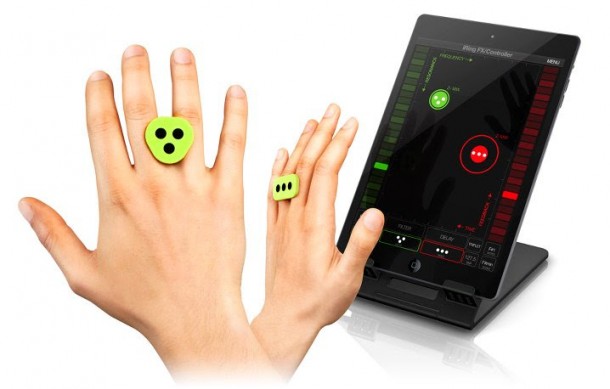
Motion controls have seen a decline in recent months in gaming. Kinect is being forced out of the Xbox, Nintendo doesn’t rely on its Wiimotes as much any more, and it never really took off on PCs. But, motion controls have been around for a lot longer in other areas, specifically music. Over twelve years ago I picked up an Alesis airFX, an audio effects processor that functions by moving any part of my body through an infrared sphere to modify the sounds inputted into it. I still use it today, as well as my Korg Kaoss Pad, another unique device that modifies sounds when tapped on its touchpad.
The airFX isn’t available any more, but IK Multimedia — creators of the popular iRig — have taken a similar approach with their newest device, the iRing.
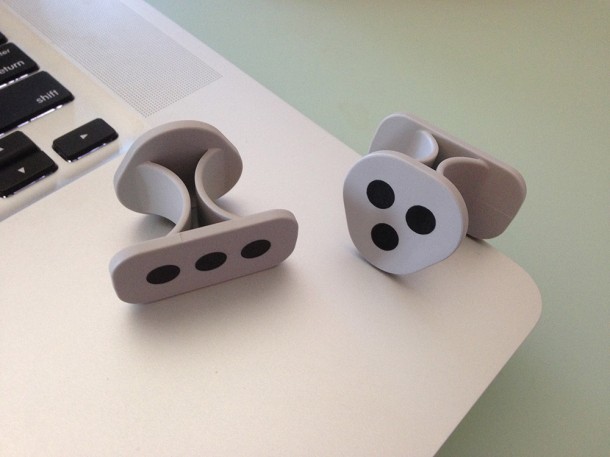
Like the iRig, the iRing is iOS-based. It uses compatible apps that process its input method, which is genuinely novel. Much like the Kinect’s camera-focus, the iRing uses the iPad or iPhone’s camera to sense dots on rings. The rings fit easily and comfortably between two fingers on each hand, and are dual-sided with a different pattern on either side. Either the front or the rear camera can be used, and by waving my hands in front of it I can create different effects or sounds.
The technology behind the iRing works exactly as advertised, and it’s fun too. I’ve been using my review unit not only at home in the studio but also on my Summer deejay gigs, and found it quite entertaining.
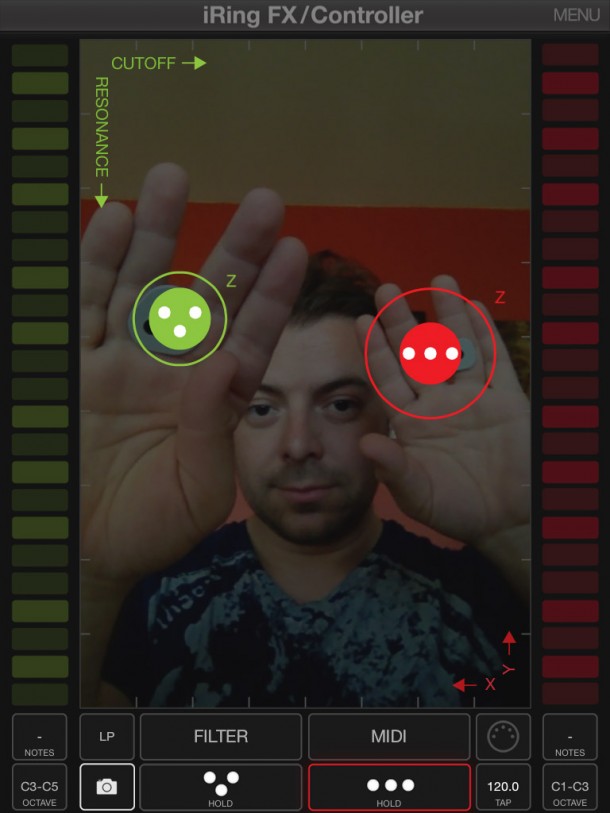
The spacial awareness is fairly good. By moving my hand in and out, left and right, or twisting & “hiding”, I’m able to modify the sounds I’m hearing. With my iPad, I’ve found the range to be about 3 feet with the front-facing camera and 5 feet with the rear. I have an iPad 2, which doesn’t quite have the camera fidelity that newer models have, so the range could be better. It also doesn’t perform super well in low light. During one outdoor gig, as night rolled in the camera couldn’t pick up the rings very well, virtually stopping all together after sunset. It would require a lot of light in the booth to get the concept to work decently in a club environment, especially with the flashing lights.
Every cool device is just a piece of hardware if it doesn’t have the software to realize its potential. iRing is part-way there. There are currently a few free and paid apps available that use the device. Groovemaker is a simple synth that uses samples affected by hand placement. iRing Music Maker and iRing Effects are similar, with MM as an output program and Effects for midi inputs, all with an iRig plugged in to capture audio. They’re essentially different ways to do things that we already do today with more professional software, but the hand-waving aspect provides an interesting way to discover effects. I’d rather do this than turn virtual knobs when trying to create something new, and then bring it into a more premium program to fine-tune it.
https://www.youtube.com/watch?v=frrzDG9LJWw
This isn’t perfect, though. If the iPad/camera is off at even a slight an angle, then the finding the sweet spot is ever more difficult. At times I have to hold my hands above my shoulders to find the effect I want, and flipping my hand away to “capture” the effect only works about 50% of the time. Plus, in order to really use any of the apps it requires the purchase of a full version or an iRig. These are just barebones versions that are available for free.
It’s the DJ Rig app that I’ve found to be the best use of the iRing in actual situations. It’s the airFX all over again. As I stand in front of it, with two songs selected in the virtual turntables, I’m able to crossfade and apply several effects. For anyone who uses iOS as their portable deejay home, this is super useful at creating a unique, almost dance-like experience. It also impresses the audience. My only issue with DJ Rig is that it requires the tablet be placed horizontal, and with the camera at the right I’m constantly off-center of where I want to be, and need to stand a bit further back.
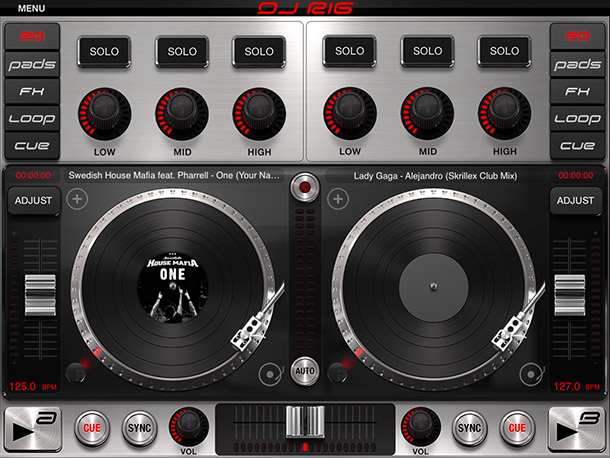
The apps are minimal right now, and it does take more of an investment to actually utilize the iRing to much extent. However, the technology works well and is novel in its approach. I’d love to see it expand to other uses, like games, dancing or 2D art creation. Heck, it could be a great way to spin 3D models around in CAD software.
The iRing is a promising idea. The technology is solid, though it depends a little too much on the lighting of the room and position of the device. I wish the apps were as robust as they could be, because the $25 asking price seems a little steep with minimal supplied. (The apps can actually be downloaded and used without the iRing.) It’s almost there as a complete package. If anything, it’s fun to play around with until then.
This review is based on a unit supplied to SideQuesting by IK Multimedia. The iRing was used with an iPhone 5 and an iPad 2.

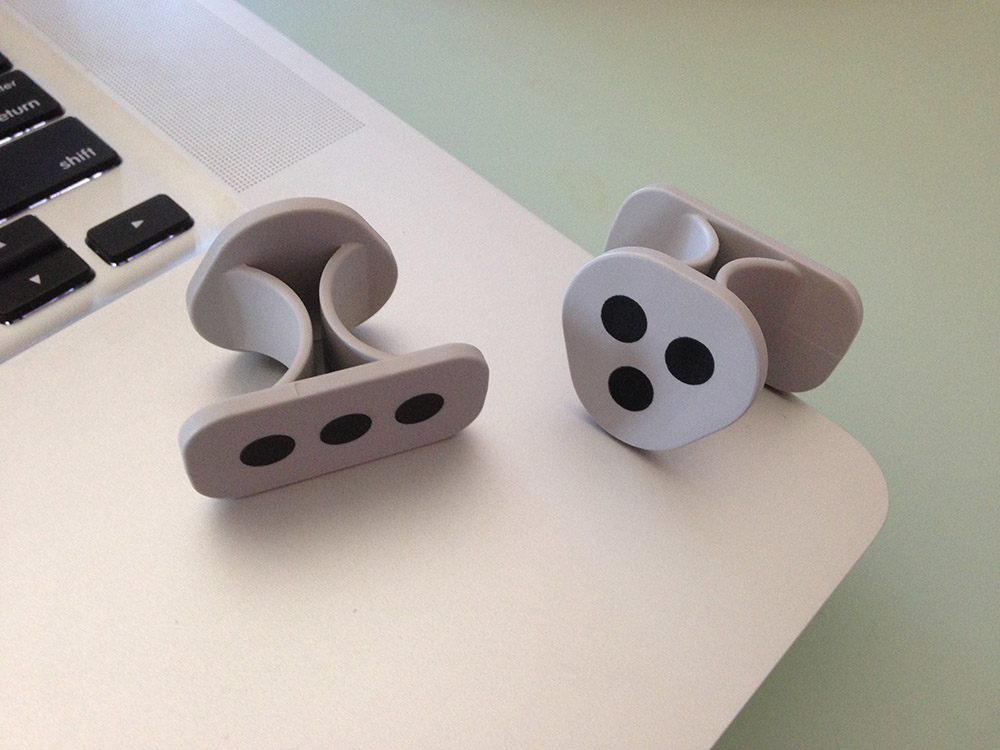
No Comments